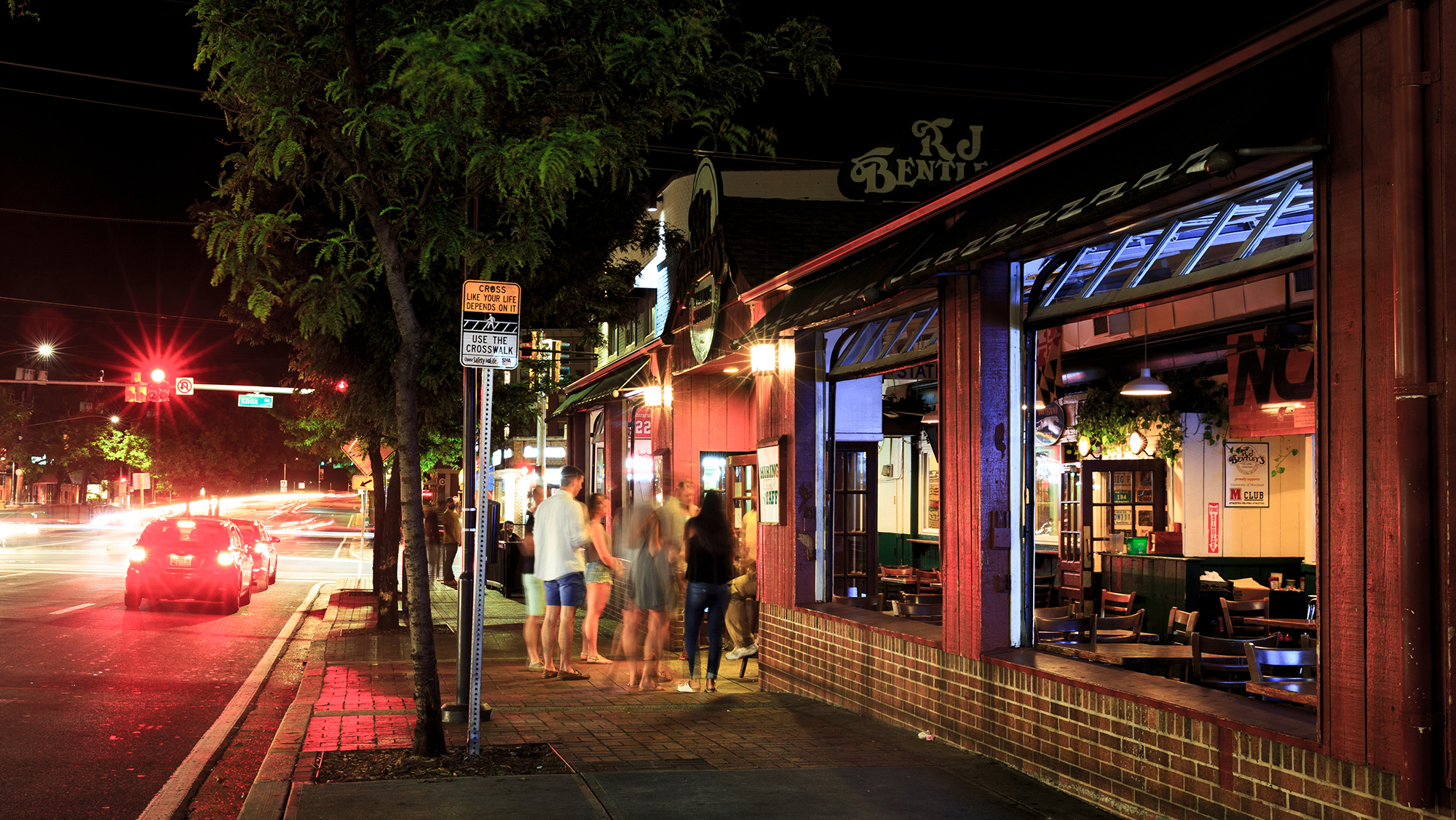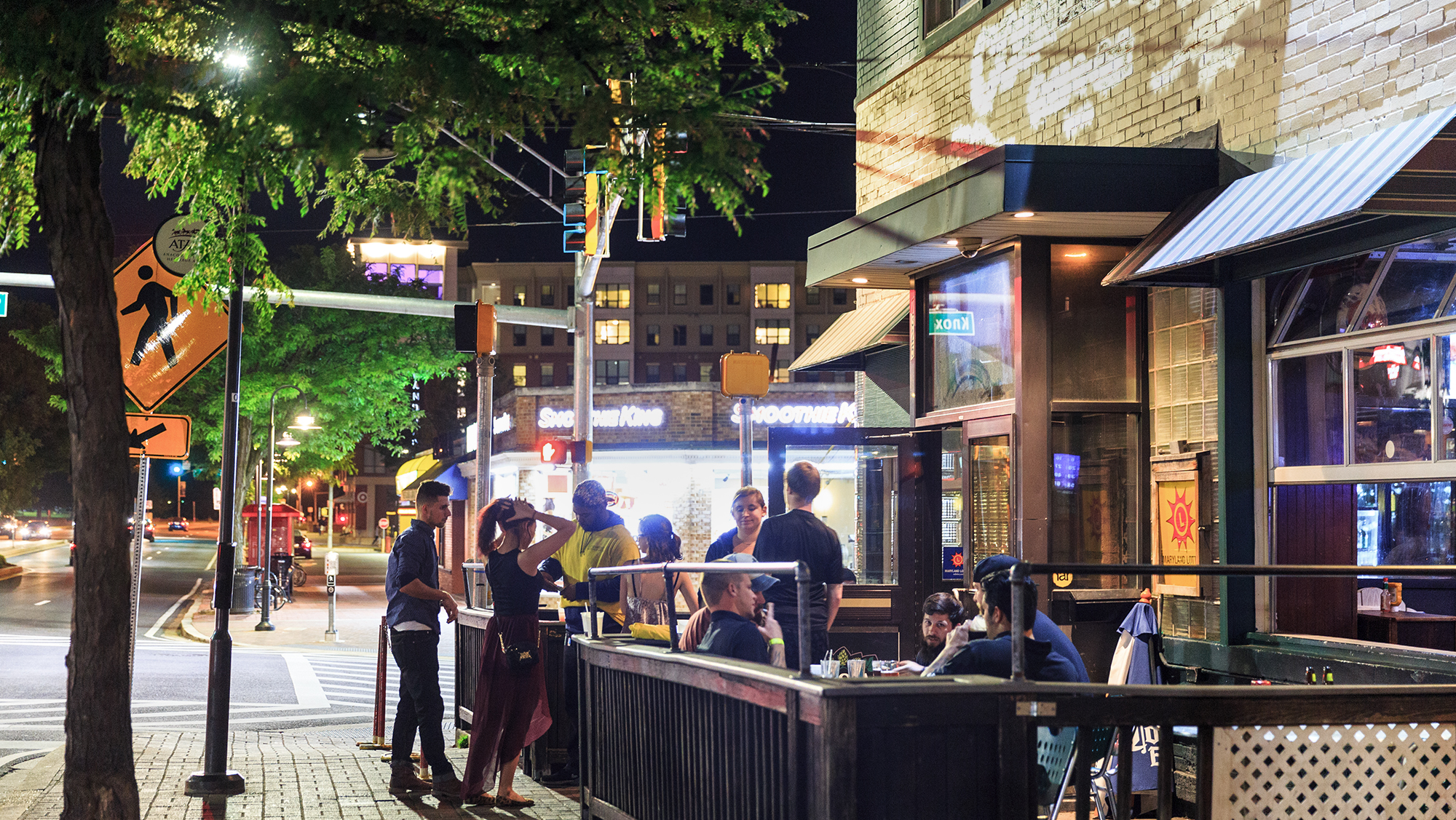Bars across the country have recently been looking inward, acknowledging the role alcohol plays in sexual assault and implementing bystander intervention training for bartenders, bouncers and general staff.
The nascent effort in College Park kicked off in the fall, when CARE to Stop Violence deployed a team of educators to talk to the staff of R.J. Bentley’s about steps they can take to intervene if they see a patron in an unsafe situation.
In February, CARE also trained staff at Cornerstone Grill & Loft. There are no set plans to train the several other College Park bars, including Terrapin’s Turf and Looney’s Pub, though CARE hopes to approach them soon.
CARE’s lead educator LaVonne Whitehead said the office is tweaking the training — and working through how to combat issues such as high bar employee turnover rates — before rushing to bring it to every bar in the city. Limited data exists nationwide about what works and what doesn’t when it comes to training bar employees how to effectively intervene, though the small studies that have been done indicate positive results.
“Bystander intervention is a relatively new conversation, and the national landscape is looking at specific populations where this is really working. College students is one, and bars are another,” Whitehead said. “Our strategy is not trying to jump in all at once, but to make sure we’re really crafting a message that speaks to the population.”
Alcohol is widely considered the most common date rape drug, with between 50 and 70 percent of campus sexual assaults involving alcohol, according to the Joint President/Senate Sexual Assault Prevention Task Force, which was created to provide recommendations on how to prevent sexual assault at this university.

R.J. Bentley’s bar on Route 1 on Wednesday, May 16, 2017. (Tom Hausman/The Diamondback)
The CARE training at both Bentley’s and Cornerstone, much of it driven by the bar staff’s own observations and experiences, lasted about an hour. They worked through how to intervene if a staff member sees a person, clearly uncomfortable, pressed against a wall by another patron. They discussed how to cut off someone who’s downing their 10th shot as the person sitting with them is sipping their second Coors Light. And they went over how to call out someone goading their friend to loosen a girl up by getting her drunk.
The group watched a graphic video depicting a woman’s night out before she is sexually assaulted. The video shows all the steps bystanders — including a bartender and bouncer — could’ve taken to stop the assault.
“We’re trying to normalize a check-in,” Whitehead said. “If your gut-check feeling is going off, there’s probably a reason for that.”
That concept is something Katie Wilson, a bartender at Bentley’s, has internalized since she went through the training.
When she noticed a guy getting pushy at the bar, she called over a bouncer to make sure the woman he was with felt comfortable. The bouncer ended up sending the man, who had gotten too drunk, home.
“If people go up and check in, even if the situation is uncomfortable, then maybe it could prevent a really bad situation,” said Wilson, a junior psychology major.
Scott Berryman, another bartender at Bentley’s, said the biggest benefit of the training was getting the staff to talk to each other and share steps they’re already taking to prevent sexual assault. Berryman said the group discussed how they’ll make sure to serve water between rounds and throw away all unattended drinks.
The group also talked about barriers that exist when intervening: For example, tips constitute a huge chunk of the money bartenders take home each night, which gives an incentive to serve an extra drink.
“But what does a couple dollars tip mean in comparison to saving someone from a traumatic and dangerous situation?” said Berryman, a senior computer science major.

The Cornerstone bar and grill on the corner of Route 1 and Knox road on Wednesday, May 16, 2017. (Tom Hausman/The Diamondback)
The training for bar staff is a modified version of what much of the campus community has seen through CARE’s Step UP! program. In the past year, CARE brought bystander intervention to UNIV100 classes and other campus groups, and university President Wallace Loh recently accepted recommendations to implement additional in-person sexual misconduct training throughout a student’s time on the campus.
The Step UP! model preaches the use of the “three D’s” to diffuse a situation: direct, distract and delegate.
“We’re having these conversations with students where we talk about the people they can delegate to,” Whitehead said. “We mention [resident assistants, community assistants], and we also say, ‘Go to the bartender and bouncer.’ But if they’re going to the bartender or the bouncer and they’re not equipped, that would be problematic on our end.”
For Ian Tolino, a manager at Cornerstone and a CARE employee, it’s important to change the attitudes of both bar staff and students.
“People may not look to a bouncer or bartender as someone they could get help from — they normally are going to them for their next drink or handing them their ID,” Tolino said. “We just want to come off as friendly as possible and let people know we’re the first line of defense.”
More than 90 percent of men self-report that they become more sexually aggressive in drinking settings, according to a 2008 study.
“Alcohol doesn’t cause sexual assault, but it’s often used as either a weapon to incapacitate a person or an as an excuse for aggressive behavior,” said Jessica Raven, the executive director of Collective Action for Safe Spaces, which runs the DC Safe Bars project.
Whitehead said she heard of the Safe Bars initiative and wanted to mimic it on the campus.
Safe Bars has received national attention for its work training Washington bar staff to spot unwanted sexual attention that may lead to an assault. More than 20 bars and restaurants have gone through the two-hour training and certification process, which costs $500.
The program provides posters for the bar to put around its venue to let women know they’re in a certified Safe Bar. To maintain this distinction, bar staff must get re-trained each year. Safe Bars also provides a free, six-month check up to refresh skills and address concerns about quick staff turnover.
Elise Lopez, statewide evaluation coordinator for the Arizona Safer Bars Alliance, lists multi-session training as one of the best practices that exist in bystander intervention programming.
“It’s important just to be able to refresh their memory on strategies they may have forgotten, and it helps to reflect upon the past year and talk about what they’ve experienced,” said Lopez, who has worked on the issue for about three years. “It reaffirms the commitment.”
Quick turnover has already been an issue in College Park, where students fill many of the staff positions.
Isabella Chestney has worked as a server at Bentley’s since February. While she said bystander training for bar staff makes sense, Chestney hasn’t heard anyone at work talk about training her since she got the job.
A handful of other universities are also providing this training to their local bar staff. The University of North Carolina-Chapel Hill, University of Iowa and University of South Florida all have a bystander intervention programs for local bars in place.
The University of Michigan is the recipient of a $20,000 state grant that pays for an initiative it calls Raise The Bar. At this university, CARE has no such resources dedicated to implementing bystander intervention training for bar staff.
And with resources already spread thin in the office tasked with educating the campus community about sexual assault and advocating for survivors, CARE officials don’t know when exactly they’ll bring bystander intervention to other College Park bars. There also aren’t plans in place to do a refresher course for the bars already trained.
“We could always use the support,” Whitehead said. “If we had a person who was specifically able to focus on the off-campus community, oh wow, that would be great. We could expand what we’re doing, and maybe I would have a timeline for when we planned to visit each bar.”


